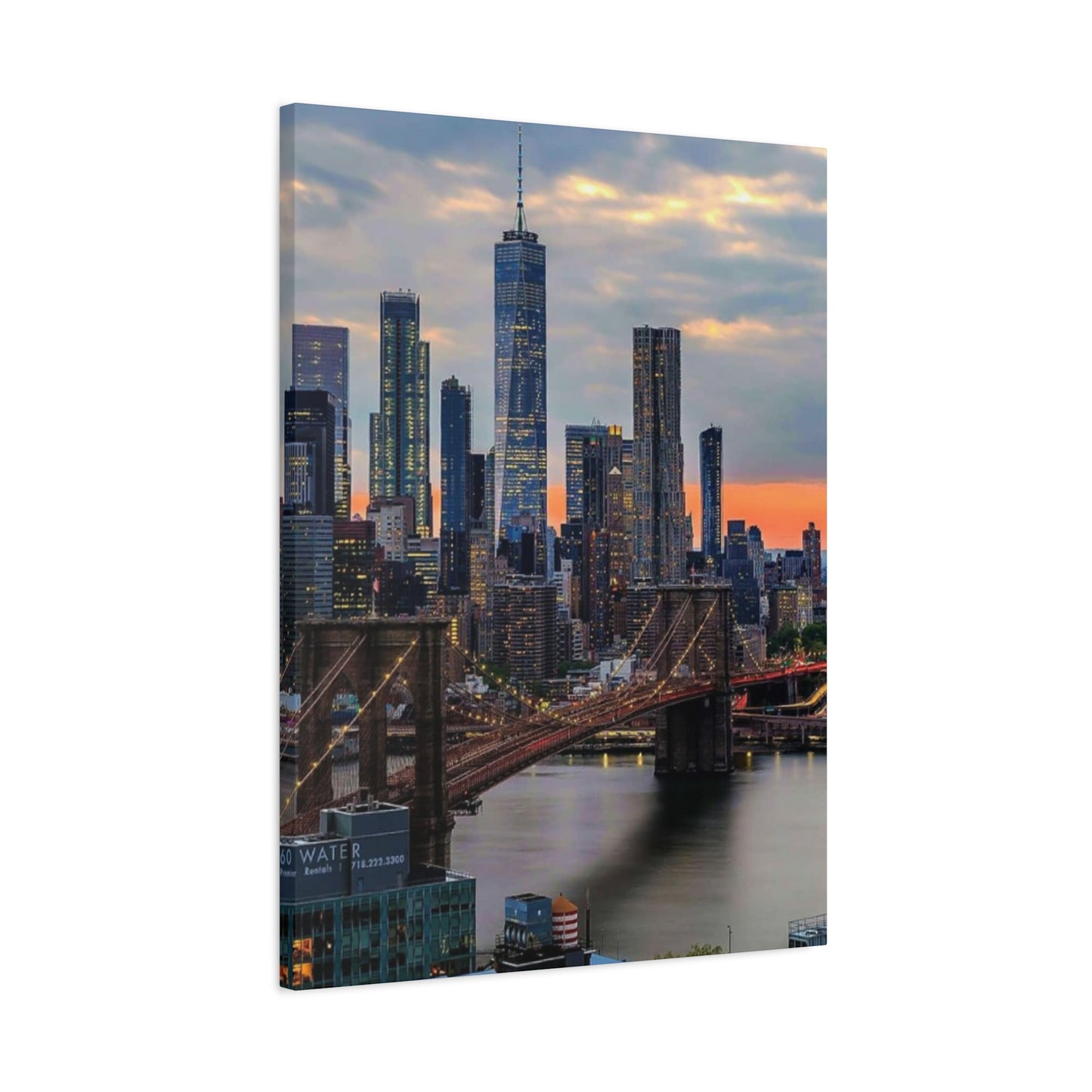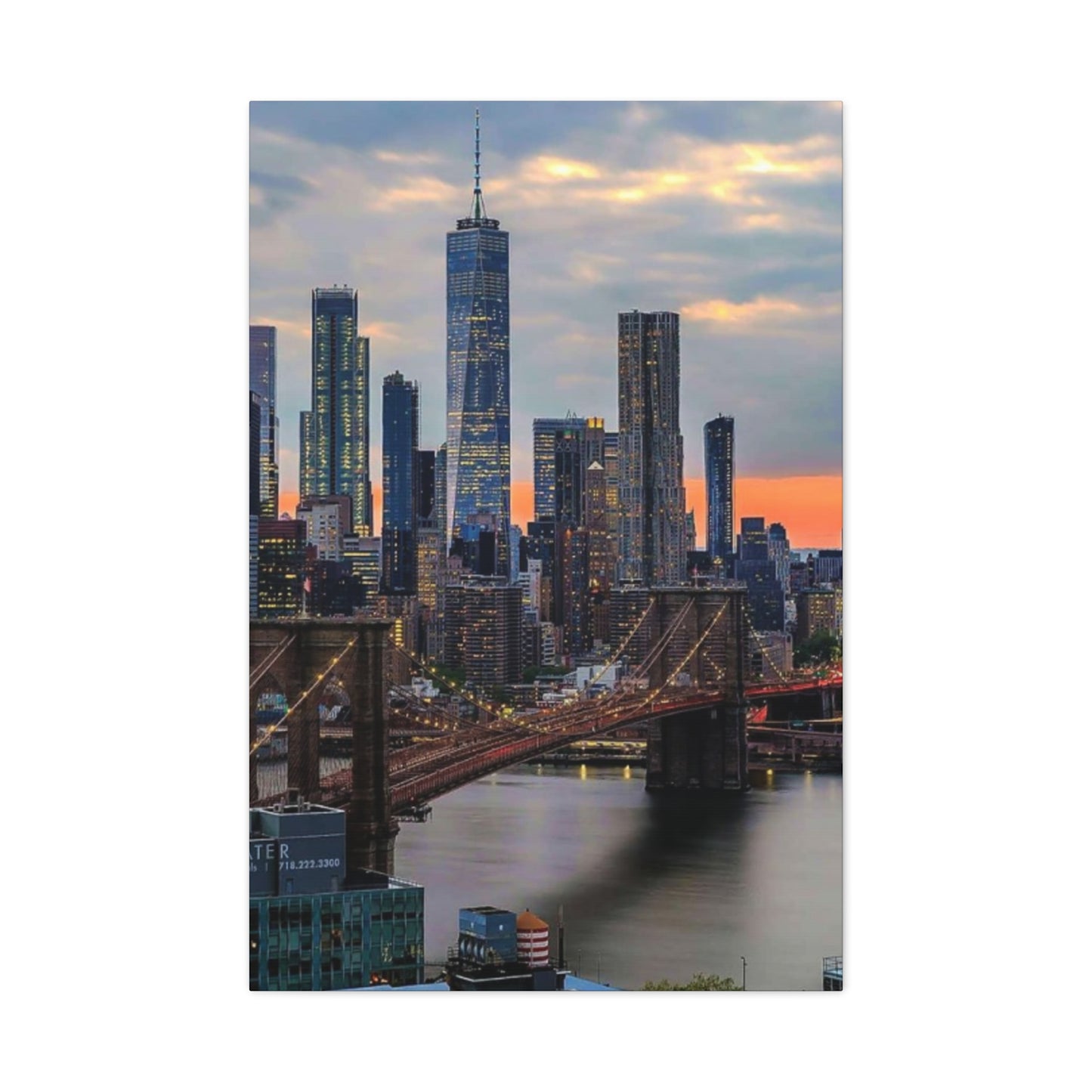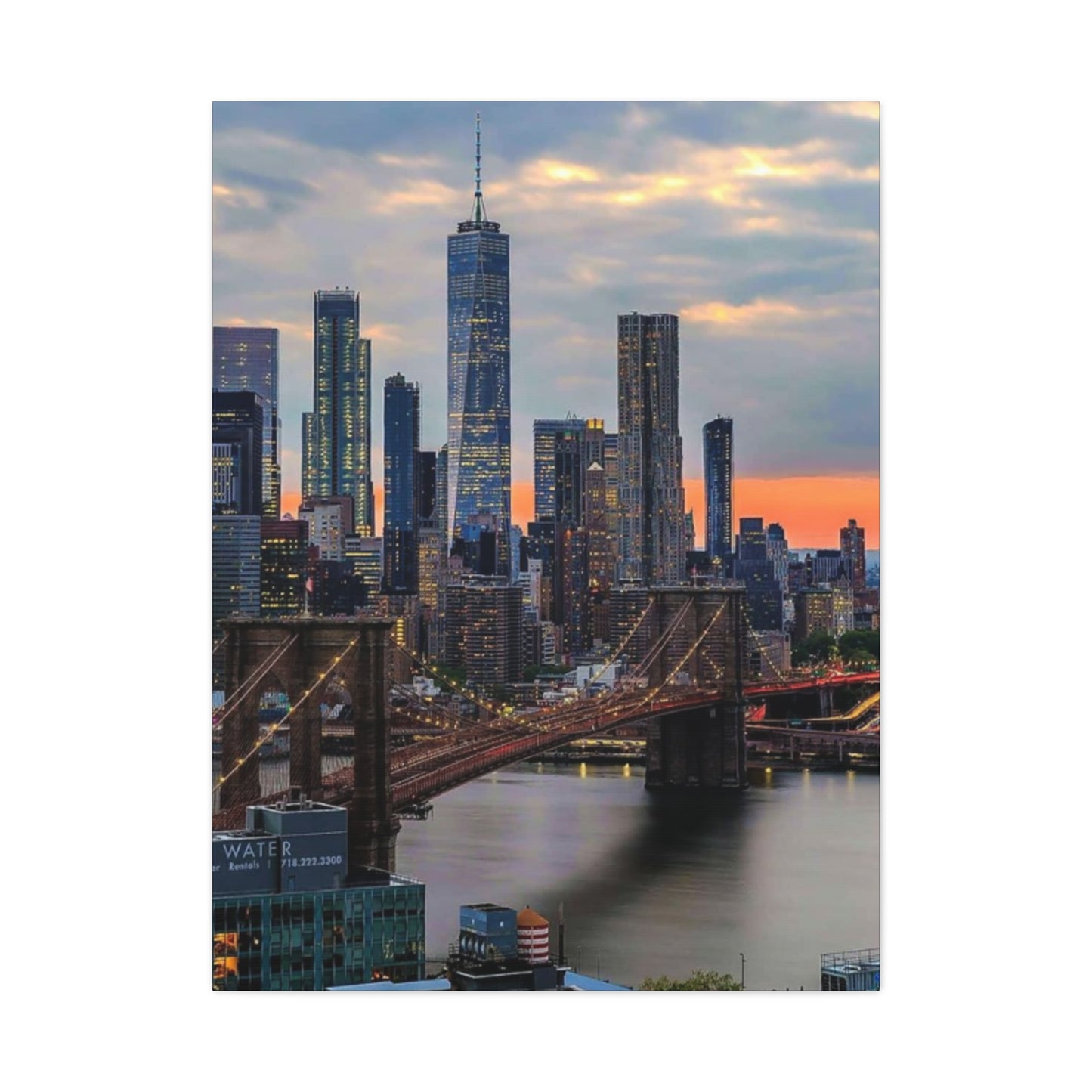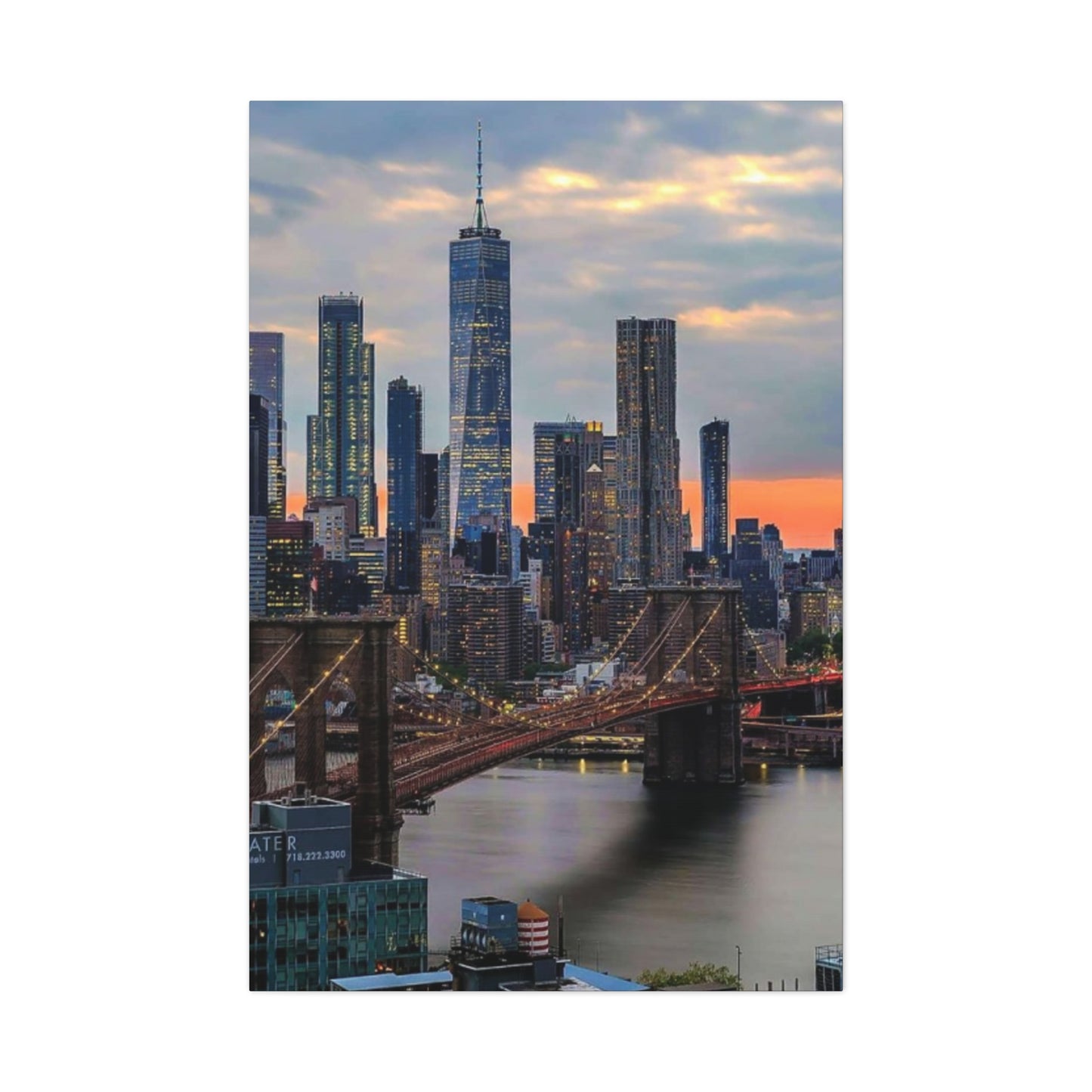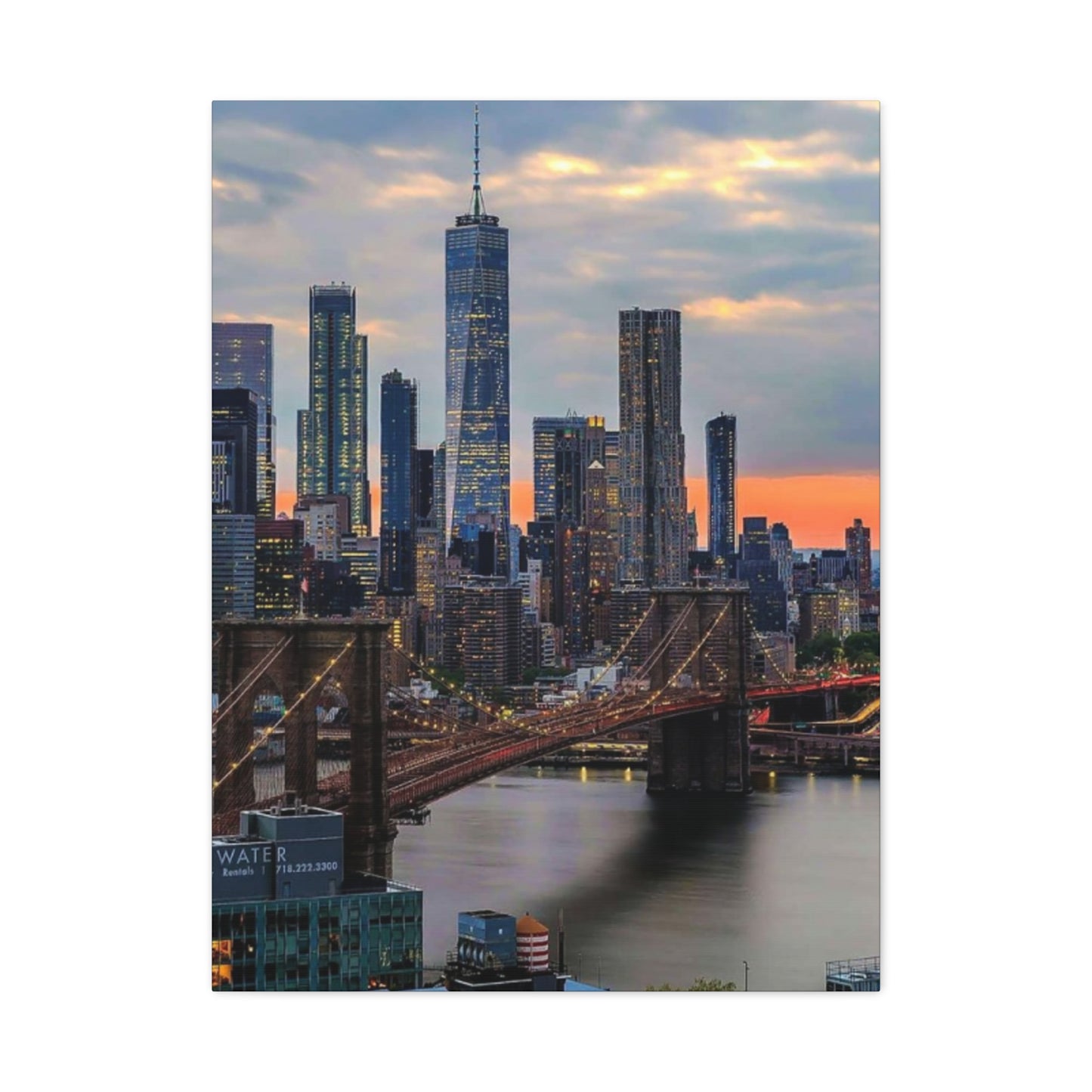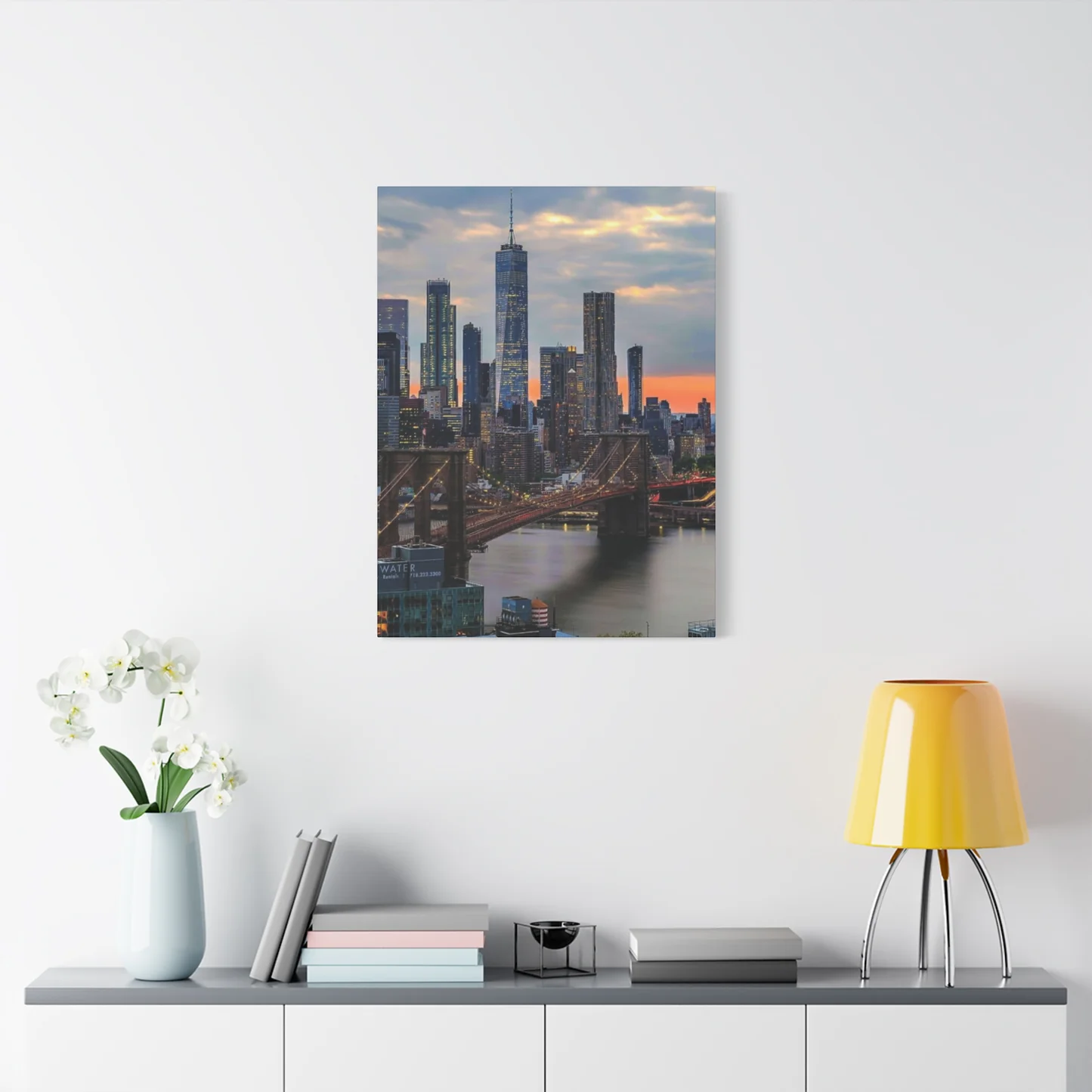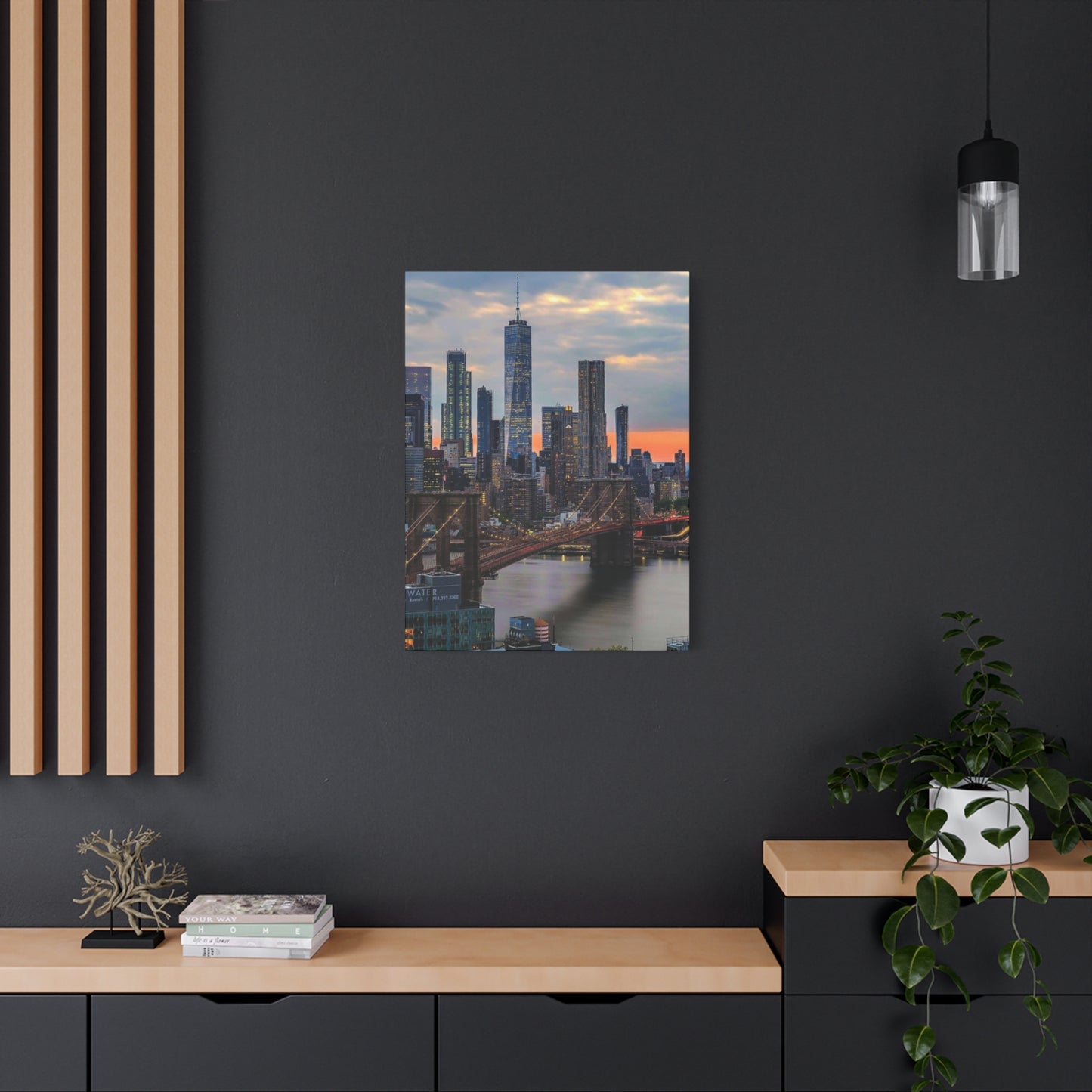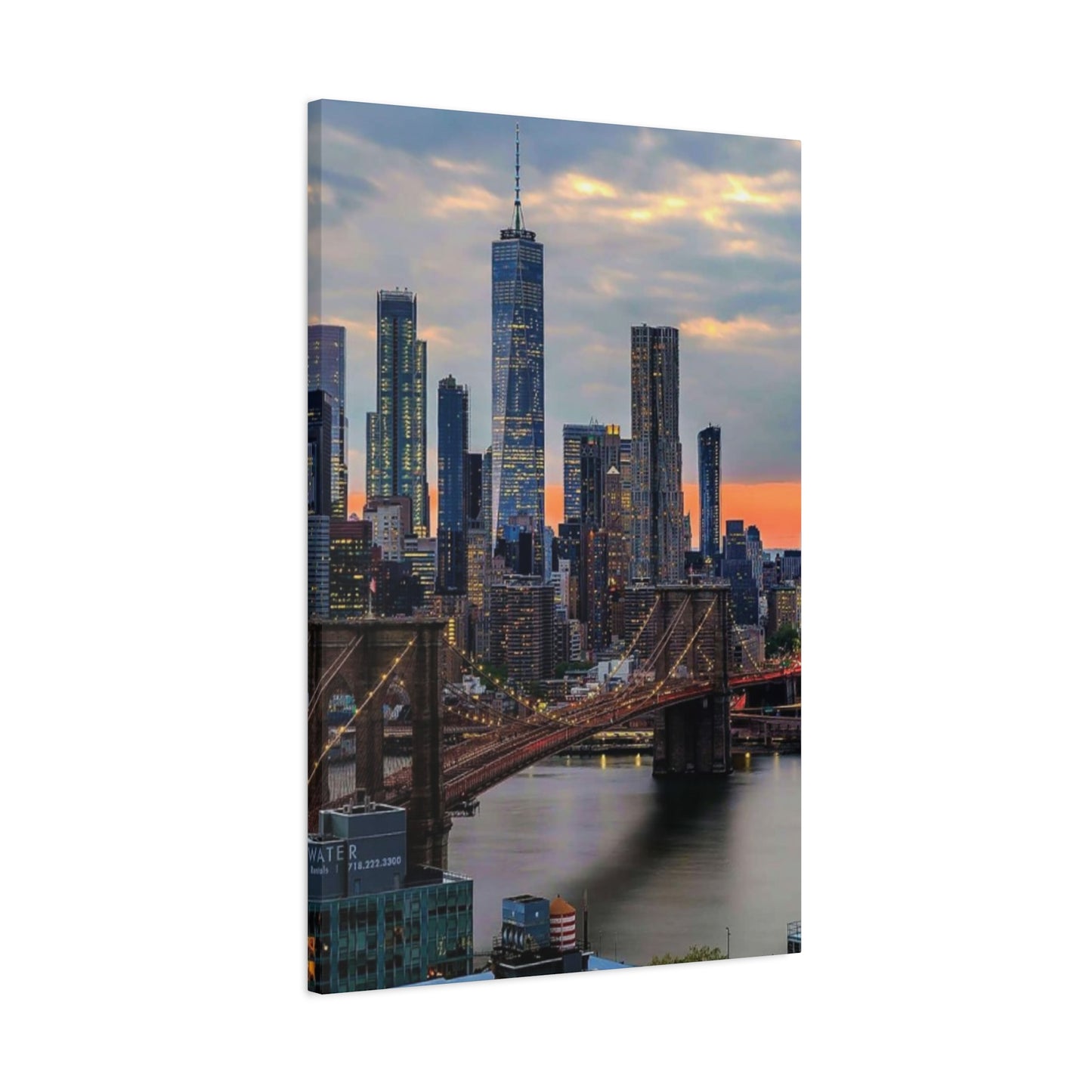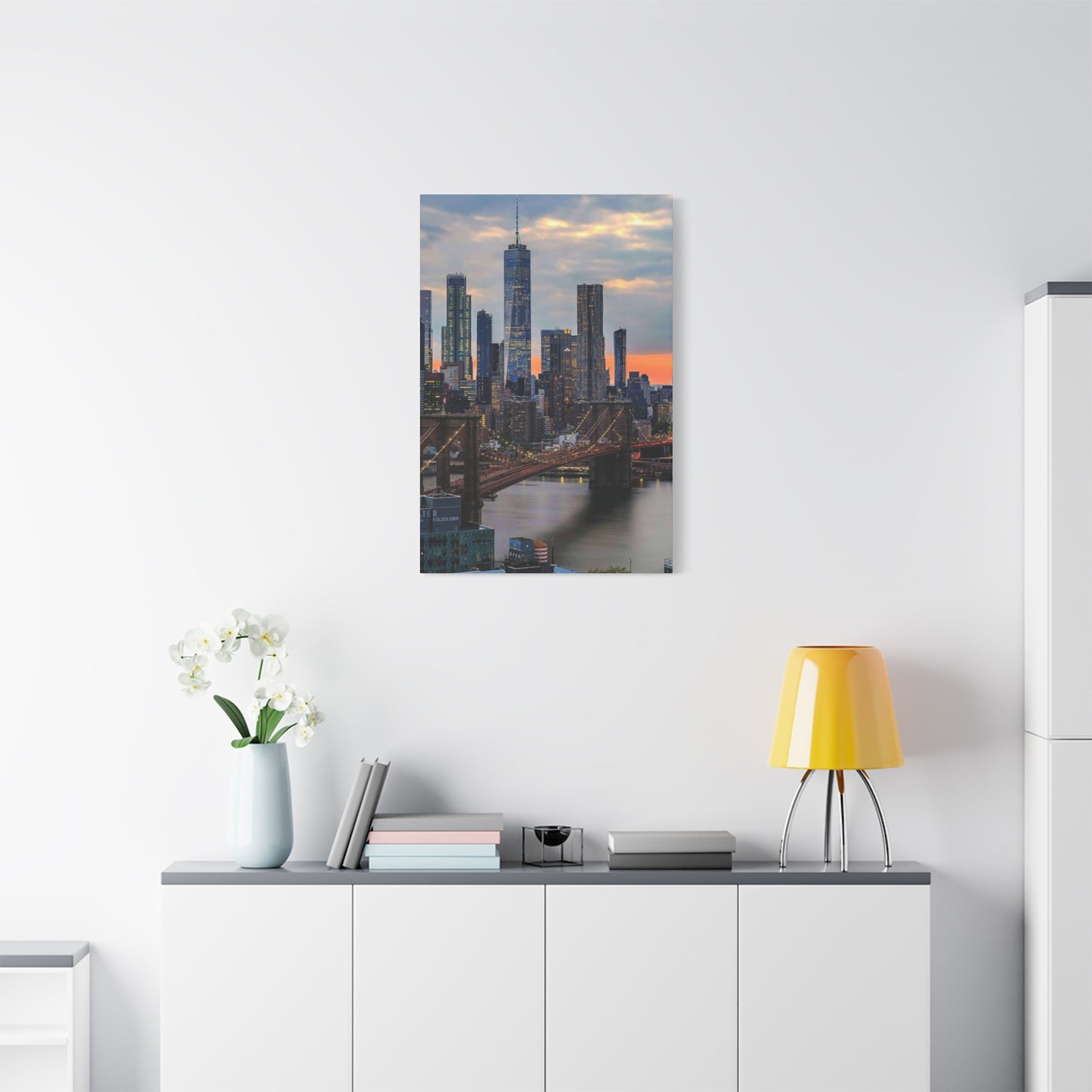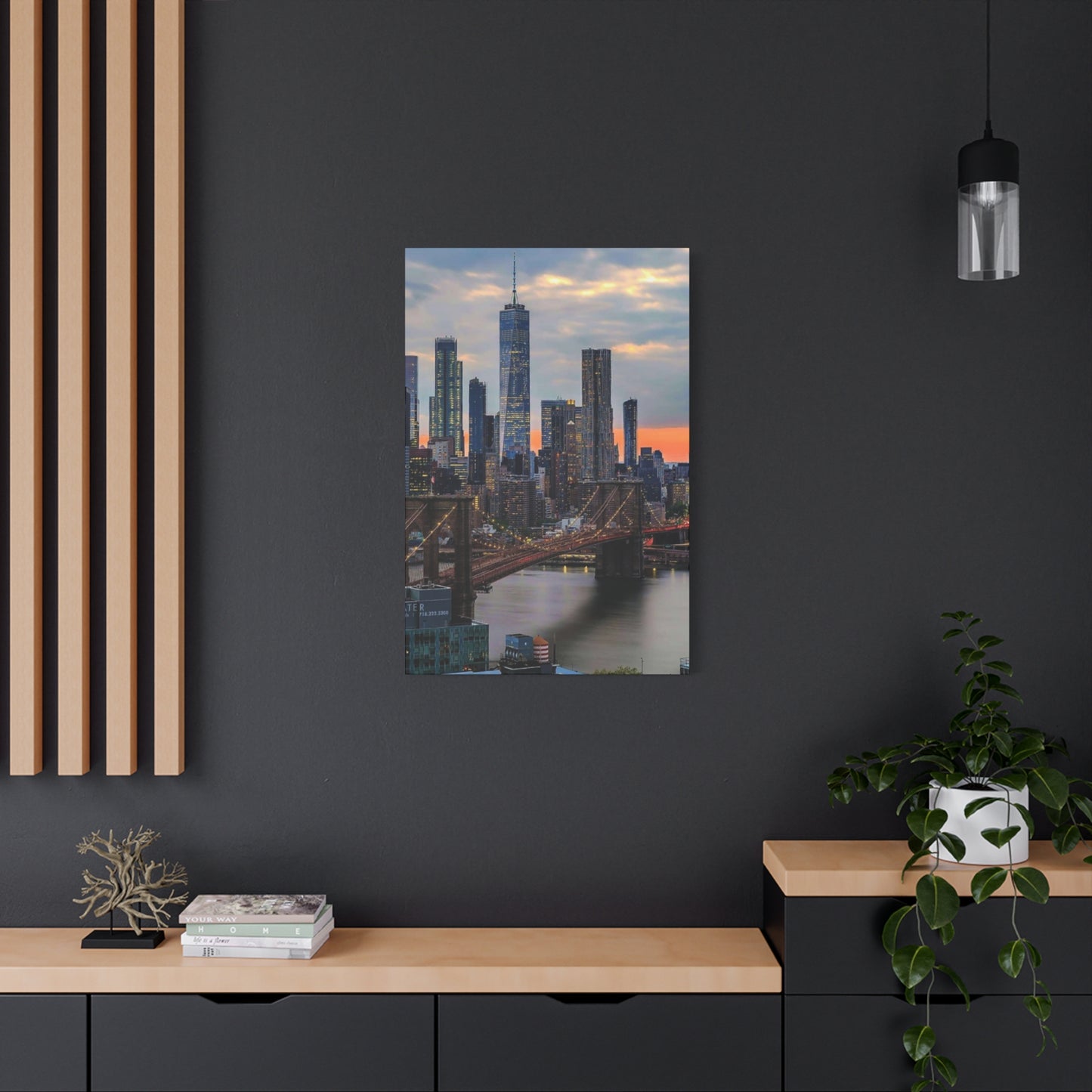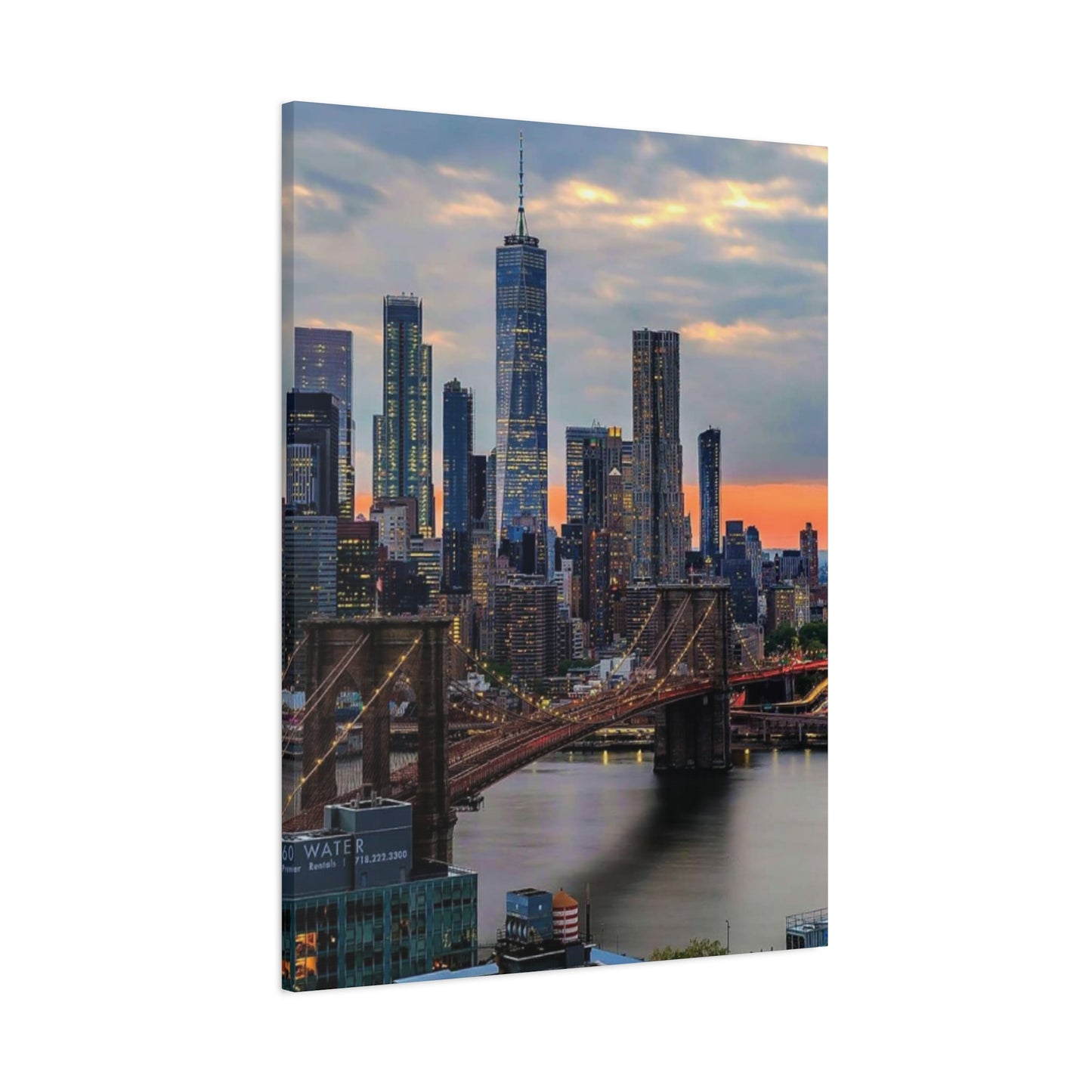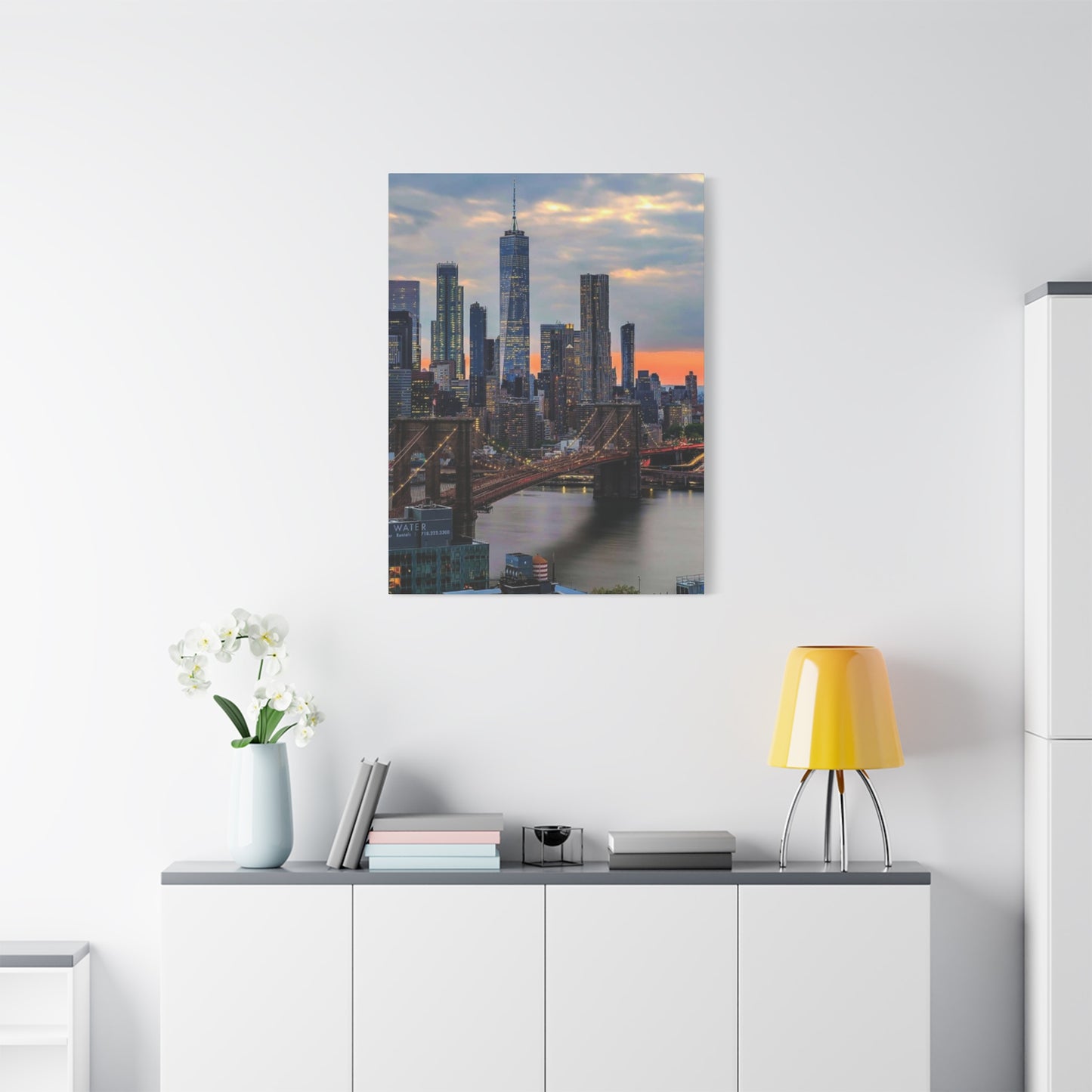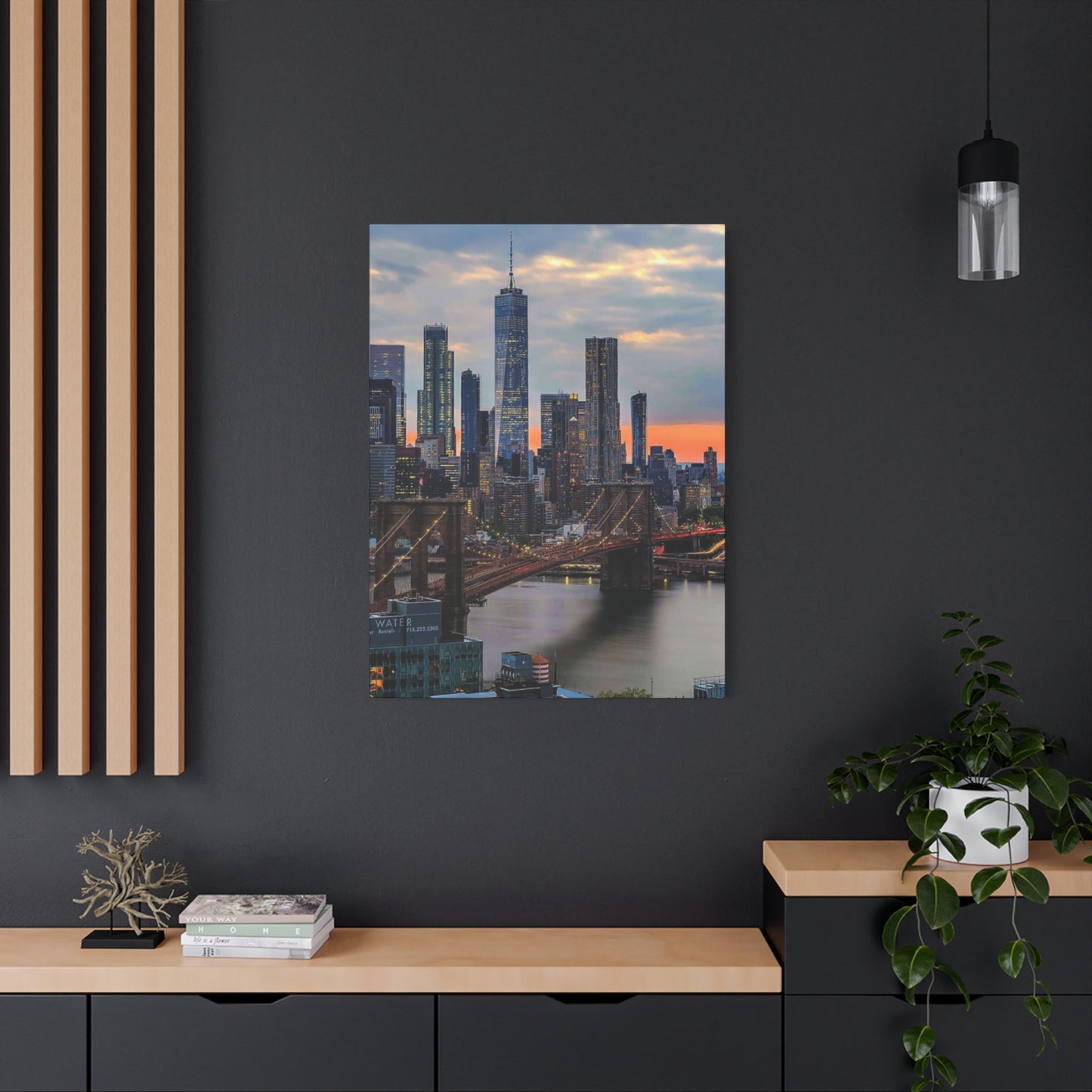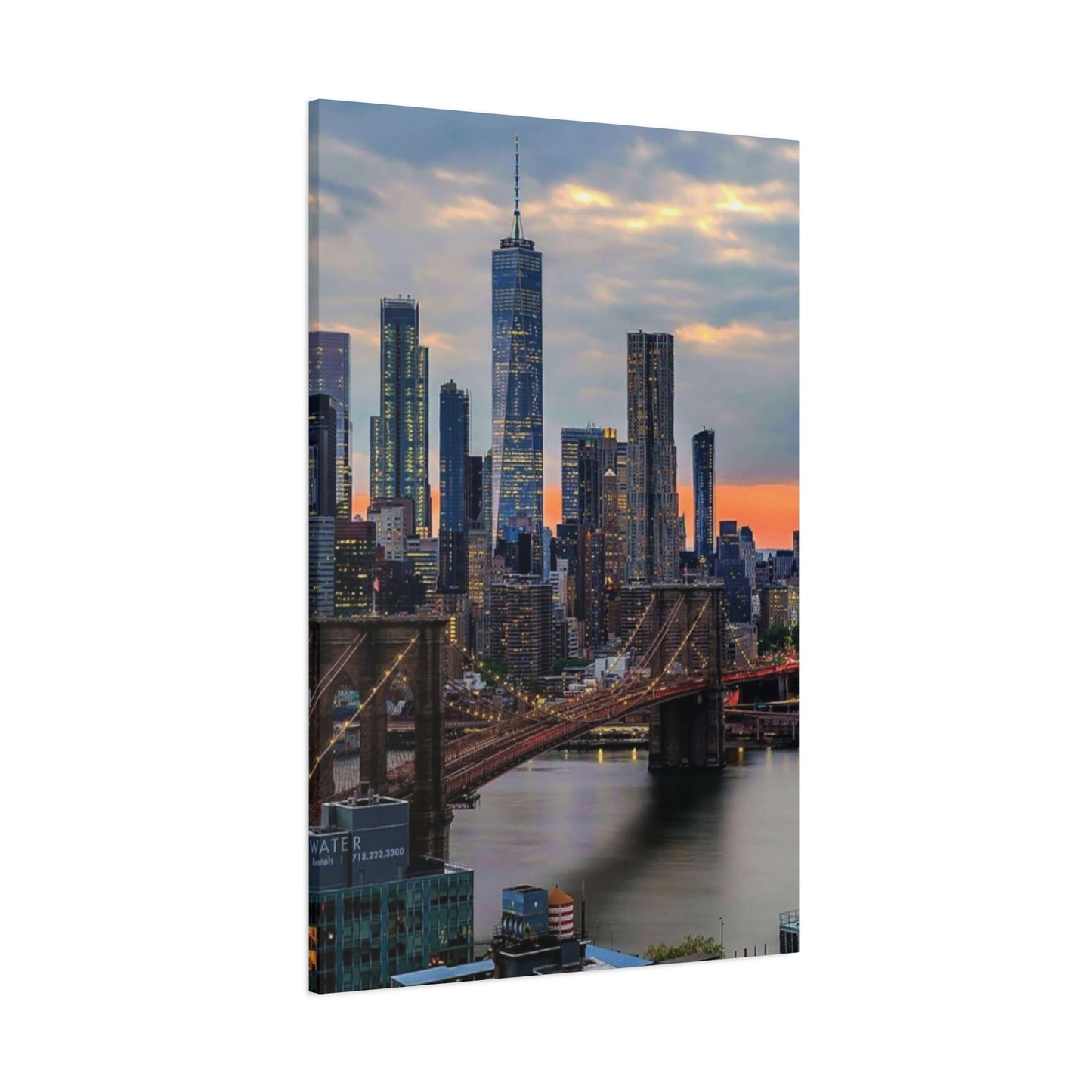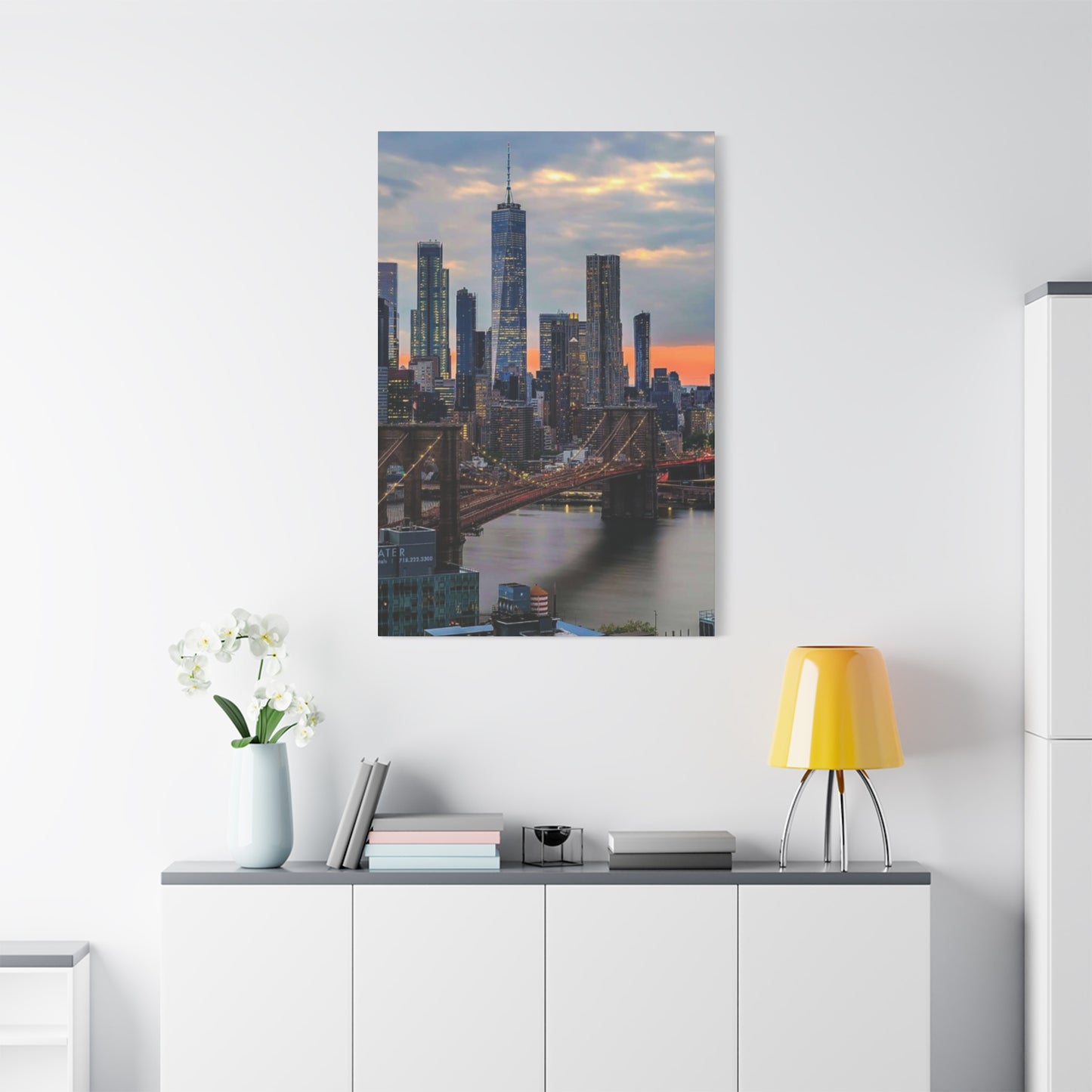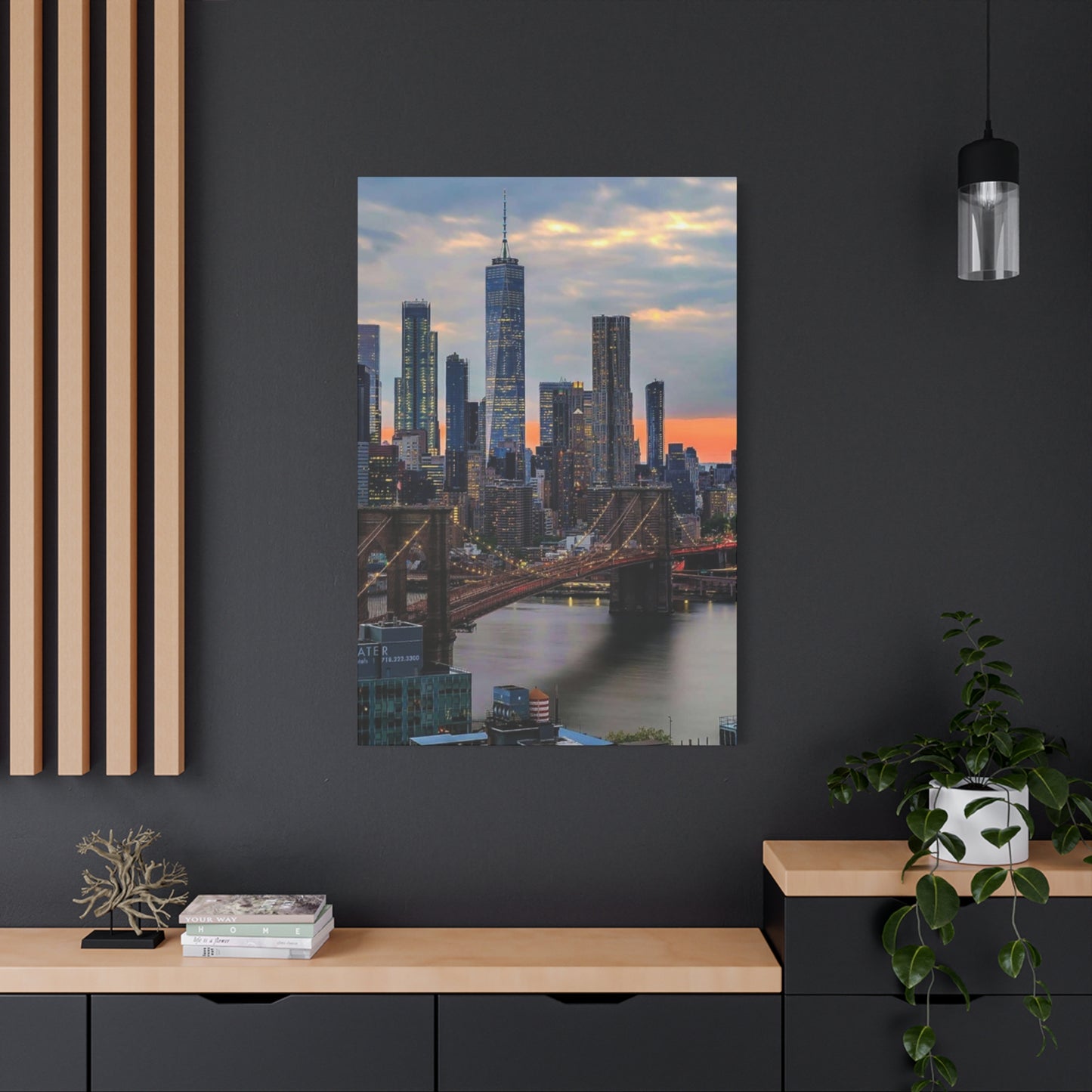Cloudy New York Skyline Wall Art: City Elegance in Shades of Grey
The iconic Manhattan skyline is one of the most recognizable cityscapes in the world. With its towering skyscrapers, architectural diversity, and cultural symbolism, it has long captivated artists, photographers, and admirers across the globe. As a result, New York City skyline wall art has become a popular decorative element for homeowners, interior designers, art collectors, and anyone seeking to bring a touch of urban sophistication into their space.
Among the many interpretations of the Manhattan skyline, pieces that showcase the city in a cloudy, monochromatic palette—especially in shades of grey—offer a unique sense of elegance and mood. These works often convey a quiet, introspective atmosphere, capturing the grandeur of the city even on overcast days. The use of grey tones softens the visual impact while maintaining the drama and structure of the skyline, making it a versatile option that complements a wide range of interior styles, from industrial lofts to modern minimalist apartments.
What makes cloudy NYC skyline wall art especially appealing is its ability to evoke emotion while maintaining a sense of neutrality. The muted color scheme allows it to blend seamlessly into various color palettes and décor styles. Whether rendered in black-and-white photography, abstract paintings, or digital prints, these pieces lend a refined, contemporary feel to any room. The absence of bright colors shifts the focus to form, light, and contrast—drawing the viewer into the details of each building, shadow, and cloud-covered sky.
NYC Skyline at Sunset: Golden Hour Magic in Art
The mesmerizing beauty of NYC skyline at sunset captures one of nature's most spectacular daily performances against the backdrop of human architectural achievement. Artists and photographers have long been drawn to these fleeting moments when the sun casts warm, golden light across the towering structures of Manhattan, creating dramatic silhouettes and vibrant color palettes that evoke emotion and wonder.
Sunset skyline artwork typically features the iconic buildings of Manhattan bathed in warm oranges, deep purples, and brilliant yellows as the day transitions into evening. These pieces often showcase the Empire State Building, One World Trade Center, and the Chrysler Building as they pierce through layers of atmospheric haze and light. The artistic interpretation of these moments can range from hyper-realistic photography to impressionistic paintings that capture the mood and feeling rather than precise architectural details.
Photographers specializing in NYC skyline at sunset often position themselves at strategic locations such as Brooklyn Bridge Park, Liberty State Park, or the Top of the Rock observation deck to capture these magical moments. The resulting images frequently feature dramatic cloud formations, reflective water surfaces, and the interplay between natural light and artificial illumination as the city begins to awaken with its evening glow.
Contemporary artists working with sunset skyline themes often employ various mediums including oil paints, watercolors, digital art, and mixed media compositions. These works may incorporate abstract elements, enhanced color saturation, or stylized interpretations that emphasize the emotional impact of the scene rather than photographic accuracy. The warm color palette associated with sunset skyline art makes these pieces particularly suitable for creating inviting, comfortable atmospheres in residential and commercial environments.
The popularity of NYC skyline at sunset artwork extends beyond traditional fine art into modern home décor applications. Large canvas prints, metal prints, and acrylic mounting options allow these stunning images to serve as statement pieces that command attention while complementing various design aesthetics. The warm tones naturally harmonize with both contemporary and traditional furnishing styles, making sunset skyline art a versatile choice for diverse decorating schemes.
Black and White NYC Skyline: Timeless Monochrome Elegance
The artistic power of black and white NYC skyline imagery lies in its ability to distill the essence of the city's architectural grandeur into pure form, contrast, and composition. This classic approach to urban photography and art emphasizes the structural beauty, geometric patterns, and dramatic interplay of light and shadow that define Manhattan's distinctive silhouette.
Monochrome representations of the NYC skyline possess a timeless quality that transcends temporary trends and fashion cycles. The absence of color forces viewers to focus on fundamental design elements such as line, form, texture, and proportion. This artistic approach often reveals details and relationships between buildings that might otherwise be overlooked in full-color representations, creating images that reward careful observation and contemplation.
Professional photographers working in black and white often employ advanced techniques to maximize contrast and tonal range in their NYC skyline captures. Long exposure methods can transform moving clouds into smooth, flowing elements that contrast beautifully with the static, angular forms of skyscrapers. The careful manipulation of highlights and shadows can create dramatic effects that emphasize the vertical thrust of tall buildings against horizontal elements like bridges, waterways, and distant horizons.
The aesthetic appeal of black and white NYC skyline art makes it particularly well-suited for sophisticated, minimalist décor schemes. These pieces can serve as focal points in modern offices, upscale residential environments, and commercial venues where understated elegance is desired. The monochromatic palette ensures compatibility with virtually any color scheme while adding visual interest through striking compositional elements.
Contemporary artists continue to explore new interpretations of black and white NYC skyline themes through various mediums and techniques. Charcoal drawings, ink illustrations, and digital manipulations offer alternative approaches to traditional photography, each bringing unique textural qualities and artistic perspectives to familiar subjects. These works may incorporate stylistic elements from different artistic movements, creating hybrid pieces that blend classical monochrome aesthetics with modern artistic sensibilities.
The printing and presentation options for black and white NYC skyline art have expanded significantly with advances in digital printing technology. High-quality archival prints on various substrates, from traditional photographic papers to canvas, metal, and acrylic materials, allow for diverse presentation styles that can complement different architectural and decorating contexts.
Night View NYC Skyline Art: Illuminated Urban Landscapes
The transformation of the NYC skyline after dark creates entirely different artistic opportunities as millions of lights transform the city into a glittering jewel against the night sky. Night view NYC skyline art captures the energy, vibrancy, and never-sleeping nature of the metropolis through dramatic illumination patterns that create striking visual narratives.
Nighttime skyline photography requires specialized techniques to capture the delicate balance between artificial lighting and natural darkness. Long exposure methods can create smooth light trails from moving traffic while maintaining sharp definition in architectural elements. The careful management of exposure settings allows photographers to retain detail in both the brightest illuminated areas and the darker shadow regions, creating images with rich tonal depth and visual complexity.
The artistic interpretation of nighttime NYC skylines often emphasizes the contrast between the warm glow of building interiors and the cool tones of the night sky. This color temperature variation creates natural focal points and helps establish visual hierarchy within compositions. Street lighting, illuminated signage, and the glow from countless windows combine to create patterns of light that can be both realistic and abstract, depending on the artist's approach and technique.
Digital artists working with nighttime skyline themes have unprecedented opportunities to enhance and stylize their imagery through advanced post-processing techniques. Color grading, selective lighting adjustments, and the addition of atmospheric effects can transform straightforward photographs into highly stylized artistic interpretations that emphasize mood and emotion over documentary accuracy.
The appeal of night view NYC skyline art extends across various market segments, from luxury hotels and restaurants seeking to create sophisticated ambiances to residential clients wanting to bring urban energy into their living environments. The dramatic lighting effects and rich color palettes associated with nighttime cityscapes make these pieces particularly effective as statement artwork in contemporary settings.
Installation considerations for night view skyline art often involve careful attention to ambient lighting conditions in the display environment. Proper illumination can enhance the perceived depth and luminosity of nighttime skyline prints, while poor lighting conditions may diminish their visual impact. Professional framers and gallery designers often recommend specific lighting solutions to optimize the viewing experience for these specialized artworks.
Abstract NYC Skyline Prints: Artistic Interpretation Beyond Reality
Abstract interpretations of the NYC skyline push beyond literal representation to explore the emotional, psychological, and spiritual essence of urban experience through innovative artistic approaches. These works often deconstruct familiar architectural forms into their fundamental elements, reassembling them in ways that suggest rather than explicitly depict the city's characteristic features.
Contemporary artists creating abstract NYC skyline prints employ various techniques and mediums to achieve their creative visions. Geometric abstraction might reduce complex building forms to simple shapes and lines that maintain recognizable relationships while eliminating specific architectural details. Color field approaches might use broad areas of related hues to suggest the atmospheric qualities and emotional resonance of urban environments without depicting specific structures.
The artistic freedom inherent in abstract approaches allows creators to incorporate personal perspectives, emotional responses, and conceptual ideas into their NYC skyline interpretations. These works might explore themes such as urban alienation, architectural rhythm, social stratification, or environmental concerns through visual metaphors and symbolic representations that extend beyond mere aesthetic considerations.
Mixed media techniques offer particularly rich possibilities for abstract NYC skyline artwork. Artists might combine traditional painting methods with collage elements, incorporating actual materials from the city such as maps, newspapers, building fragments, or found objects. These approaches can create textured, multi-dimensional works that engage viewers on multiple sensory levels while maintaining connections to their urban subjects.
The market for abstract NYC skyline prints appeals to collectors and decorators seeking unique, conversation-starting pieces that offer ongoing visual interest through their interpretive complexity. Unlike literal representations that might quickly become familiar, abstract works often reward repeated viewing with new details, relationships, and meanings that emerge over time.
Contemporary printing technologies enable the reproduction of abstract skyline artwork with remarkable fidelity to original textures, color relationships, and dimensional effects. Specialized substrates and printing techniques can preserve the physical qualities of original mixed media works, allowing for broader distribution of these unique artistic interpretations while maintaining their essential character and impact.
NYC Skyline with Statue of Liberty: Iconic American Symbols United
The combination of the NYC skyline with the Statue of Liberty creates one of the most powerfully symbolic artistic subjects in American visual culture. These compositions unite two of the nation's most recognizable landmarks, creating images that simultaneously represent urban achievement, historical significance, and enduring ideals of freedom and opportunity.
Artistic treatments of NYC skyline with Statue of Liberty compositions must carefully balance the scale and prominence of these two distinct elements to create harmonious, visually compelling results. The Statue's position in New York Harbor provides natural foreground interest while the Manhattan skyline creates a dramatic backdrop, but successful compositions require thoughtful attention to proportional relationships, lighting conditions, and atmospheric effects.
Professional photographers working with these subjects often employ telephoto lenses to compress the apparent distance between the Statue and the skyline, creating more intimate compositional relationships than actually exist. Strategic positioning at locations such as Staten Island Ferry routes, Brooklyn waterfront parks, or New Jersey observation points allows for various perspective combinations that can emphasize different aspects of these iconic subjects.
The symbolic resonance of NYC skyline with Statue of Liberty imagery makes these works particularly popular for commemorative purposes, patriotic displays, and international marketing applications. The combination naturally evokes themes of American achievement, cultural diversity, economic opportunity, and historical continuity that resonate with diverse audiences both domestically and internationally.
Contemporary artistic interpretations of this classic pairing explore various stylistic approaches from photorealistic representations to highly stylized, conceptual treatments. Some artists emphasize the contrast between the Statue's classical sculptural form and the modern geometric architecture of Manhattan, while others seek to harmonize these elements through unified color palettes, lighting effects, or compositional structures.
The commercial applications of NYC skyline with Statue of Liberty artwork extend across numerous industries including tourism, hospitality, corporate environments, and retail merchandising. These images serve as instantly recognizable symbols of New York City and American culture, making them valuable assets for businesses seeking to establish connections with these powerful brand associations.
Minimalist NYC Skyline Line Art: Simplified Urban Beauty
The minimalist approach to NYC skyline line art distills the complex architectural landscape of Manhattan into its most essential elements, creating clean, sophisticated imagery that emphasizes form, proportion, and spatial relationships over decorative details. This artistic style appeals to contemporary aesthetic sensibilities that value simplicity, clarity, and refined elegance.
Line art representations of the NYC skyline typically employ continuous or broken linear elements to suggest building outlines, horizon lines, and major architectural features without relying on shading, color, or textural effects. The resulting images possess a graphic quality that translates well across various applications, from large-scale architectural installations to small-scale decorative accessories.
Contemporary digital artists have embraced minimalist skyline line art as a medium that showcases their understanding of essential design principles while demonstrating technical precision in execution. Vector-based creation methods allow for infinite scalability and reproduction flexibility, making these works particularly suitable for diverse commercial and decorative applications.
The aesthetic philosophy behind minimalist NYC skyline line art aligns with broader contemporary design movements that emphasize functionality, sustainability, and visual clarity. These works often appeal to audiences seeking sophisticated artwork that complements modern architectural environments without competing for attention or overwhelming existing design elements.
The production and presentation of minimalist skyline line art can take advantage of various printing and display technologies to achieve optimal results. High-contrast printing methods can ensure crisp, clean line quality, while specialized substrates such as metal, acrylic, or canvas can add subtle textural interest without compromising the essential simplicity of the artistic approach.
The versatility of minimalist NYC skyline line art makes it suitable for diverse decorating contexts, from corporate offices and medical facilities to residential environments and hospitality venues. The clean, uncluttered aesthetic can provide visual interest while maintaining the calm, organized atmosphere desired in many contemporary settings.
Colorful NYC Skyline Canvas: Vibrant Urban Energy
Colorful interpretations of the NYC skyline celebrate the dynamic, energetic character of the metropolis through bold, expressive use of hue, saturation, and chromatic relationships. These artistic approaches often abandon naturalistic color schemes in favor of expressive palettes that capture the emotional and psychological impact of urban experience through pure visual excitement.
Contemporary artists working with colorful NYC skyline themes often draw inspiration from various artistic movements including Fauvism, Pop Art, and contemporary street art traditions. These influences can result in works that feature unexpected color combinations, high contrast relationships, and bold graphic treatments that transform familiar architectural subjects into celebrations of pure visual energy.
The technical approaches to creating colorful NYC skyline canvas art vary widely depending on the artist's preferred medium and aesthetic goals. Traditional painting methods might employ acrylic or oil paints to build up layers of vibrant color, while digital techniques can achieve color effects and combinations that would be difficult or impossible to achieve through conventional means.
The psychological impact of colorful skyline artwork makes these pieces particularly effective for environments where energy, creativity, and positive mood are desired. Residential applications might include children's rooms, entertainment areas, or creative workspaces where stimulating visual environments support active, engaging experiences.
Contemporary canvas printing technologies have revolutionized the reproduction and distribution of colorful NYC skyline artwork. High-quality digital printing can accurately reproduce subtle color relationships and complex color gradations while maintaining the textural qualities associated with traditional canvas substrates. UV-resistant inks ensure long-term color stability, making these reproductions suitable for various environmental conditions.
The market appeal of colorful NYC skyline canvas art extends across age groups and cultural backgrounds, as the universal recognition of Manhattan's architectural profile combined with expressive color treatments creates immediately accessible yet sophisticated artistic statements. These works can serve as conversation starters while providing ongoing visual interest through their complex color relationships and dynamic compositional elements.
NYC Skyline Wall Mural Ideas: Transformative Large-Scale Art
The concept of NYC skyline wall murals represents one of the most dramatic and transformative approaches to incorporating urban imagery into residential and commercial environments. These large-scale installations can completely alter the character and perceived dimensions of rooms while creating immersive experiences that transport viewers into the heart of Manhattan's architectural landscape.
Contemporary mural design techniques for NYC skyline subjects can range from photorealistic reproductions that create convincing illusions of windows or openings to highly stylized interpretations that emphasize artistic expression over documentary accuracy. The choice of approach often depends on the intended function of the decorated room and the aesthetic preferences of the client or design team.
The technical execution of NYC skyline wall murals has been revolutionized by digital printing technologies that can produce extremely high-resolution imagery suitable for viewing at close distances. Advanced printing methods can accommodate various wall surfaces and environmental conditions while maintaining image quality and color accuracy across large installations.
Design considerations for NYC skyline wall murals must account for room proportions, existing architectural features, lighting conditions, and furniture arrangements to create harmonious, functional results. Professional mural designers often provide detailed visualization services that allow clients to preview proposed installations before committing to major decorating investments.
The installation process for large-scale NYC skyline murals requires specialized techniques and professional expertise to achieve seamless, durable results. Proper surface preparation, precise alignment, and appropriate adhesive systems are essential for long-term success, particularly in high-traffic or challenging environmental conditions.
The transformative impact of well-executed NYC skyline wall murals can extend far beyond mere decoration, creating focal points that organize entire room layouts while establishing powerful emotional and psychological connections to one of the world's most dynamic urban environments.
NYC Skyline Photography Prints: Capturing Urban Magnificence
Professional NYC skyline photography prints represent the intersection of technical excellence and artistic vision, requiring sophisticated equipment, advanced techniques, and deep understanding of the city's unique lighting conditions and atmospheric characteristics. These works document the ever-changing face of Manhattan while creating lasting artistic statements that celebrate urban architectural achievement.
The technical challenges of NYC skyline photography include managing extreme contrast ranges between bright building surfaces and deep shadows, achieving sharp focus across vast depth-of-field requirements, and capturing optimal lighting conditions that may exist for only brief periods during specific weather and atmospheric conditions.
Contemporary digital photography techniques have expanded the creative possibilities for NYC skyline imagery through advanced post-processing capabilities, high dynamic range capture methods, and focus stacking techniques that can achieve previously impossible combinations of sharpness, contrast, and tonal range.
The aesthetic evolution of NYC skyline photography continues to reflect changing artistic sensibilities and technological capabilities. While traditional approaches emphasized documentary accuracy and technical perfection, contemporary interpretations often incorporate creative processing techniques, unusual perspectives, and conceptual approaches that push beyond straightforward architectural documentation.
Professional-quality printing services for NYC skyline photography have achieved remarkable levels of quality and durability through advances in inkjet technology, substrate development, and color management systems. These improvements enable the creation of prints that rival traditional darkroom processes while offering superior longevity and environmental stability.
The market for high-quality NYC skyline photography prints spans from individual collectors seeking unique artwork to corporate clients requiring impressive installations for public areas. The universal appeal of Manhattan's architectural subjects combined with the prestige associated with fine art photography creates strong demand across various market segments.
Vintage NYC Skyline Posters: Nostalgic Urban Memories
Vintage-style NYC skyline posters tap into powerful nostalgic associations while celebrating the historical evolution of Manhattan's architectural landscape. These artistic works often reference specific eras in the city's development, from early 20th-century Art Deco influences to mid-century modern aesthetics and contemporary retro revival movements.
The artistic techniques employed in vintage NYC skyline poster design often incorporate period-appropriate typography, color palettes, and graphic design elements that evoke specific historical moments while maintaining contemporary production standards and artistic sophistication. These approaches can create powerful emotional connections to idealized versions of urban experience and cultural memory.
Contemporary designers working with vintage skyline themes must balance historical accuracy with artistic interpretation, creating works that feel authentic to their referenced periods while remaining relevant to current aesthetic sensibilities. This balancing act requires extensive research into historical design movements, printing techniques, and cultural contexts.
The commercial applications of vintage NYC skyline posters extend across various industries including hospitality, entertainment, retail, and residential decoration. The nostalgic appeal of these works can create distinctive brand associations while providing comfortable, familiar visual references that appeal to diverse audiences.
Reproduction techniques for vintage-style skyline posters often emphasize the textural and printing characteristics associated with historical production methods. Specialized printing processes can simulate aged paper effects, vintage ink characteristics, and period-appropriate color limitations to enhance authenticity while maintaining modern quality standards.
The collecting market for vintage and vintage-style NYC skyline posters reflects broader cultural interests in urban history, graphic design evolution, and nostalgic artistic expression. Original historical pieces command premium prices while high-quality contemporary interpretations provide accessible alternatives for budget-conscious collectors and decorators.
NYC Skyline in Watercolor Style: Fluid Urban Impressions
Watercolor interpretations of the NYC skyline celebrate the fluid, atmospheric qualities of this traditional artistic medium while applying them to one of the world's most recognizable urban subjects. The natural characteristics of watercolor painting—transparency, color blending, and organic edge qualities—create unique artistic opportunities for interpreting Manhattan's architectural landscape.
Traditional watercolor techniques applied to NYC skyline subjects often emphasize atmospheric effects, soft color transitions, and the interplay between precise architectural details and loose, impressionistic treatments. The medium's inherent unpredictability can produce spontaneous effects that enhance the emotional impact of urban scenes while maintaining recognizable connection to specific subjects.
Contemporary artists working with watercolor skyline themes often combine traditional painting methods with modern approaches such as digital enhancement, mixed media incorporation, or innovative application techniques that push beyond conventional watercolor limitations while preserving the medium's essential character.
The aesthetic appeal of watercolor NYC skyline art lies in its ability to soften the hard edges and mechanical precision typically associated with urban architecture, creating interpretations that emphasize the human experience of city environments rather than their purely functional or structural aspects.
Reproduction technologies for watercolor skyline artwork have advanced significantly, enabling the capture and printing of subtle color gradations, transparent overlays, and textural effects that preserve the essential qualities of original paintings while making them accessible to broader audiences.
The market positioning of watercolor NYC skyline art often appeals to clients seeking sophisticated artwork that provides visual interest without overwhelming existing décor schemes. The naturally soft, harmonious character of watercolor imagery makes these pieces particularly suitable for residential environments and commercial venues where peaceful, contemplative atmospheres are desired.
Large NYC Skyline Canvas Art: Statement Pieces for Modern Living
Large-scale NYC skyline canvas art serves as commanding focal points that can define entire room environments while showcasing the magnificent scale and complexity of Manhattan's architectural achievements. These substantial artistic statements require careful consideration of proportional relationships, viewing distances, and environmental context to achieve maximum impact and aesthetic success.
The production of large NYC skyline canvas art involves sophisticated printing technologies capable of maintaining image quality, color accuracy, and fine detail reproduction across expansive surface areas. Professional-grade equipment and specialized techniques ensure that these substantial pieces maintain visual coherence and artistic integrity when viewed from various distances.
Design considerations for large skyline canvas installations must account for room scale, ceiling height, wall dimensions, and existing furnishing arrangements to create balanced, harmonious results. Professional installation services often provide consultation and measurement services to optimize placement and presentation for maximum aesthetic impact.
The visual impact of well-executed large NYC skyline canvas art can extend far beyond mere decoration, creating dramatic architectural elements that transform ordinary rooms into sophisticated showcases of urban elegance. These pieces can serve as conversation starters while providing ongoing visual interest through their complex compositional elements and impressive scale.
Contemporary stretching and mounting techniques for large canvas art have evolved to provide superior dimensional stability and longevity compared to traditional methods. Advanced frame construction, tension systems, and protective treatments ensure that these substantial investments maintain their appearance and structural integrity over extended periods.
The investment value of high-quality large NYC skyline canvas art reflects both the artistic merit of the imagery and the sophisticated production techniques required to achieve professional results. These pieces often appreciate in value over time while providing immediate aesthetic and psychological benefits to their owners and viewers.
Artistic Techniques and Mediums in NYC Skyline Art
The diverse artistic approaches applied to NYC skyline subjects reflect the broad spectrum of contemporary art-making techniques and aesthetic philosophies. From traditional oil painting methods that emphasize careful observation and technical craftsmanship to cutting-edge digital manipulation techniques that push beyond photographic reality, artists continue to find new ways to interpret and present Manhattan's iconic architectural landscape.
Oil painting techniques applied to NYC skyline subjects often focus on the careful observation of light, color, and atmospheric effects that define the city's visual character throughout different seasons and times of day. Traditional approaches might emphasize accurate color temperature relationships, precise perspective construction, and detailed architectural rendering that celebrates both human achievement and natural beauty.
Acrylic painting methods offer different creative possibilities for skyline subjects, with faster drying times and greater color intensity supporting approaches that emphasize bold, expressive treatments over subtle, naturalistic effects. Contemporary artists often exploit these characteristics to create vibrant, energetic interpretations that capture the dynamic spirit of urban experience.
Digital art creation has revolutionized skyline art through sophisticated software tools that enable previously impossible combinations of photographic accuracy and artistic expression. Advanced compositing techniques allow artists to combine multiple source images, create fantastical color effects, and achieve precise control over every aspect of their compositions.
Mixed media approaches to NYC skyline art often incorporate found materials, textural elements, and dimensional components that extend beyond traditional two-dimensional limitations. These techniques might include collage elements, three-dimensional building models, or interactive components that engage viewers through multiple sensory channels.
Printmaking techniques such as lithography, screen printing, and etching continue to find contemporary applications in skyline art, often appealing to artists and collectors who value the tactile qualities and limited edition characteristics associated with traditional print media.
Color Theory and Emotional Impact in Skyline Art
The strategic use of color in NYC skyline art plays a crucial role in determining the emotional and psychological impact of these works on viewers. Understanding color theory principles and their applications can help both artists and collectors make informed decisions about artworks that will achieve desired aesthetic and emotional effects in specific environments.
Warm color palettes featuring oranges, reds, and yellows often evoke feelings of energy, excitement, and optimism when applied to skyline subjects. These color choices can make urban environments feel welcoming and dynamic while suggesting themes of opportunity, growth, and human achievement that align with positive associations of city life.
Cool color schemes emphasizing blues, purples, and greens typically create more contemplative, peaceful emotional responses while suggesting themes of stability, sophistication, and timeless elegance. These approaches can make skyline art suitable for professional environments or residential areas where calm, focused atmospheres are desired.
Monochromatic color schemes that explore various shades and tints of single hues can create sophisticated, unified visual effects while emphasizing compositional elements such as form, texture, and spatial relationships. These approaches often appeal to contemporary aesthetic sensibilities that value restraint and refinement over bold color statements.
Complementary color relationships that pair opposite hues on the color wheel can create dynamic visual tension and energy in skyline compositions. Professional artists often use these relationships strategically to create focal points, enhance depth perception, or guide viewer attention through complex compositional arrangements.
Color temperature considerations play particularly important roles in skyline art due to the complex lighting conditions typically present in urban environments. The careful management of warm and cool color relationships can enhance the perceived depth and atmospheric quality of skyline compositions while creating natural focal point hierarchies.
Composition and Perspective in NYC Skyline Art
The compositional challenges inherent in NYC skyline art require sophisticated understanding of perspective, scale relationships, and visual organization principles to create compelling, harmonious results. The complex three-dimensional relationships between multiple buildings at various distances demand careful attention to foreground, middle ground, and background elements.
Traditional perspective techniques such as linear perspective and atmospheric perspective remain fundamental tools for creating convincing spatial illusions in skyline compositions. Professional artists often employ these methods to guide viewer attention through complex architectural arrangements while maintaining clear spatial relationships between different elements.
Contemporary compositional approaches might deliberately violate traditional perspective rules to achieve specific artistic effects or emotional impacts. Flattened perspective, exaggerated scale relationships, or impossible viewing angles can create stylized interpretations that emphasize artistic expression over photographic accuracy.
The rule of thirds and other classical compositional guidelines provide useful frameworks for organizing complex skyline subjects, but experienced artists often adapt these principles to accommodate the unique characteristics of urban architectural subjects. The vertical emphasis of skyscrapers, for example, might suggest compositional approaches that differ from traditional landscape painting conventions.
Foreground elements such as water surfaces, bridges, or vegetation can provide important compositional anchors that help establish scale relationships and create depth in skyline compositions. These elements often serve as entry points that guide viewer attention into more complex background arrangements.
The challenge of balancing multiple competing focal points in complex skyline compositions requires sophisticated understanding of visual hierarchy and attention management. Successful works often employ subtle variations in contrast, color intensity, or detail levels to create clear viewing paths through busy architectural arrangements.
Historical Evolution of NYC Skyline in Art
The artistic documentation of NYC's skyline evolution provides a fascinating visual history of urban development, architectural innovation, and cultural change over more than a century of dramatic transformation. Early artistic representations of Manhattan's growing skyline captured the excitement and optimism of rapid urban expansion while documenting specific buildings and neighborhoods that have since been demolished or dramatically altered.
Early 20th-century artistic treatments of the NYC skyline often emphasized the novelty and engineering marvel of the first true skyscrapers, with artists like Georgia O'Keeffe and Charles Sheeler creating modernist interpretations that celebrated both architectural achievement and artistic innovation. These works established artistic traditions that continue to influence contemporary approaches to urban subjects.
The Art Deco period of the 1920s and 1930s produced some of the most iconic architectural additions to the NYC skyline, including the Chrysler Building and the Empire State Building. Artistic representations from this era often emphasized the decorative details and upward thrust of these structures while incorporating the geometric and streamlined aesthetic characteristics of the Art Deco movement.
Mid-century modern approaches to skyline art reflected changing architectural sensibilities and artistic movements, with artists exploring more abstract, conceptual interpretations of urban environments. These works often emphasized the psychological and social aspects of city life rather than purely documenting architectural achievements.
The contemporary period has witnessed an explosion of diverse artistic approaches to NYC skyline subjects, supported by new technologies, global cultural exchange, and expanded definitions of artistic legitimacy. Digital art, installation work, and multimedia presentations have joined traditional painting and photography as accepted methods for interpreting urban subjects.
The ongoing transformation of Manhattan's skyline through new construction, renovation, and urban planning initiatives ensures that artistic interpretations of these subjects will continue evolving to reflect both physical changes and shifting cultural perspectives on urban experience.
Technical Considerations for Skyline Art Production
The technical aspects of creating high-quality NYC skyline art involve complex considerations related to equipment selection, technique mastery, and production workflow optimization. Professional artists and commercial producers must navigate these technical challenges while maintaining focus on artistic vision and aesthetic goals.
Photography equipment for skyline subjects often requires specialized capabilities including telephoto lenses for perspective compression, wide-angle lenses for expansive views, and tripod systems capable of supporting heavy equipment during long exposure captures. Professional-grade cameras with high-resolution sensors and extended dynamic range capabilities are essential for capturing the detail and tonal range present in complex urban lighting conditions.
Digital processing workflows for skyline photography typically involve sophisticated software applications capable of handling high-resolution files, complex layer compositing, and precise color correction. Professional colorists often employ calibrated monitor systems and standardized viewing conditions to ensure accurate color representation throughout the production process.
Printing considerations for skyline art must account for substrate selection, ink system compatibility, color gamut limitations, and environmental stability requirements. Professional print services often provide consultation on optimal combinations of printing methods and materials to achieve specific aesthetic goals while ensuring long-term durability.
Quality control procedures for skyline art production typically include systematic evaluation of technical metrics such as sharpness, color accuracy, contrast range, and surface quality. Professional producers often maintain detailed documentation of production parameters to ensure consistency across multiple prints or installations.
Archival considerations for skyline art involve selection of materials and processes that will maintain their appearance and integrity over extended periods. Museum-quality standards often guide decisions about paper selection, ink formulations, protective treatments, and storage recommendations.
Market Trends and Collecting Considerations
The market for NYC skyline art reflects broader trends in contemporary art collecting while responding to specific factors related to urban subject matter, nostalgic appeal, and cultural significance. Understanding these market dynamics can help both artists and collectors make informed decisions about creation, acquisition, and investment strategies.
Contemporary collecting trends show increasing interest in works that combine traditional artistic quality with contemporary relevance and cultural significance. NYC skyline art often satisfies these criteria through its combination of technical excellence, recognizable subject matter, and ongoing cultural resonance.
The pricing structure for skyline art varies widely depending on factors such as artist reputation, edition size, production quality, and market positioning. Original paintings typically command premium prices while high-quality prints provide more accessible entry points for beginning collectors.
Investment considerations for skyline art must account for factors such as artist career trajectory, edition management, market demand trends, and long-term cultural significance. Works by established artists with strong auction records often provide more predictable investment performance than emerging artist productions.
Authentication and provenance documentation play increasingly important roles in the skyline art market, particularly for works by recognized artists or limited edition pieces. Professional appraisal services and authentication expertise help protect collectors from fraudulent or misrepresented works.
Conservation considerations affect both the aesthetic and financial value of skyline art collections. Proper display conditions, protective framing, and periodic maintenance help preserve both the appearance and market value of these investments over time.
The global market for NYC skyline art extends well beyond domestic collectors, with international interest driven by the city's worldwide recognition and cultural significance. This broad market base helps support stable demand and price appreciation for high-quality works.
Display and Installation Best Practices
The effective display and installation of NYC skyline art requires careful attention to environmental factors, viewing conditions, and aesthetic integration with existing architectural and decorative elements. Professional installation practices can significantly enhance the visual impact and longevity of these artistic investments.
Lighting considerations play crucial roles in optimizing the appearance of skyline art, with different types of artwork requiring specific lighting approaches to achieve maximum visual impact. Photography prints often benefit from controlled lighting that minimizes reflections while maintaining color accuracy, while oil paintings might require different lighting angles to avoid glare from surface textures.
Environmental protection for skyline art installations must account for factors such as temperature fluctuations, humidity variations, air quality, and exposure to ultraviolet radiation. Professional framers often recommend protective glazing, climate control systems, and periodic monitoring to maintain optimal display conditions.
Spatial relationship considerations involve careful attention to the proportional relationships between artwork, wall dimensions, ceiling heights, and surrounding furnishings. Professional design consultants often provide visualization services and detailed planning to optimize these relationships before installation.
Security considerations for valuable skyline art installations might include specialized hanging systems, theft deterrent devices, and insurance coverage appropriate to the value and risk profile of specific pieces. Professional installation services often provide consultation on these protective measures.
Maintenance requirements for skyline art installations typically include periodic cleaning, condition monitoring, and protective system updates. Professional conservation services can provide long-term care plans that preserve both the appearance and value of these investments.
The integration of skyline art with architectural lighting, acoustic systems, and other environmental elements requires coordinated planning to avoid conflicts and achieve harmonious results. Professional project management services can coordinate these complex installations for optimal outcomes.
Cultural Significance and Symbolic Meaning
NYC skyline art carries profound cultural significance that extends far beyond its purely aesthetic qualities, serving as a visual symbol of American achievement, cultural diversity, economic opportunity, and urban sophistication. These deeper meanings contribute to the enduring appeal and market value of skyline-themed artwork while connecting viewers to broader cultural narratives and social values.
The symbolic power of Manhattan's architectural profile derives from its role as a representation of human ambition, technological progress, and cultural innovation. The vertical thrust of skyscrapers suggests themes of aspiration and achievement while the complex interplay of individual buildings reflects the collaborative nature of urban development and social organization.
Historical associations with immigration, opportunity, and the American Dream enhance the emotional resonance of NYC skyline imagery for diverse audiences. The proximity of the Statue of Liberty and Ellis Island to the Manhattan skyline creates natural narrative connections between these powerful cultural symbols and their ongoing relevance to contemporary American identity.
International perspectives on NYC skyline art often reflect the city's role as a global cultural and economic center, with the architectural profile serving as shorthand for American influence, cultural export, and international engagement. These associations can enhance the appeal of skyline art in global markets while contributing to its value as cultural diplomacy.
Contemporary social and political meanings associated with NYC skyline imagery continue to evolve in response to current events, cultural movements, and changing perspectives on urban experience. Artists working with these subjects often engage with themes such as economic inequality, environmental sustainability, and social justice that reflect ongoing debates about urban development and cultural values.
The therapeutic and psychological effects of engaging with NYC skyline art can provide additional layers of meaning for viewers seeking connections to urban energy, cultural sophistication, or nostalgic memories. These personal associations often drive collecting decisions and display choices in residential and commercial environments.
Conclusion
Cloudy New York skyline wall art captures the moody elegance and timeless charm of one of the world’s most iconic cities. Rendered in shades of grey, these artworks showcase New York’s architectural majesty and urban spirit through a softened, atmospheric lens. The cloudy aesthetic doesn’t dull the city’s brilliance—it enhances it, evoking emotion, mystery, and depth that resonate powerfully in modern interiors.
This style of wall art speaks to those who find beauty in contrast and sophistication in simplicity. The interplay between towering skyscrapers and sweeping grey skies creates a sense of scale and serenity, offering a quiet yet powerful statement piece. Ideal for contemporary, industrial, or minimalist spaces, cloudy New York skyline art can tie a room together with subtle drama and urban refinement.
Beyond its visual appeal, this art form carries symbolic meaning. The grey tones reflect the ever-changing mood of the city—resilient, contemplative, and constantly evolving. The clouds hovering above the skyline suggest movement and transformation, making these pieces not just a depiction of place, but a reflection of life's rhythms and complexities. They celebrate New York not only as a bustling metropolis, but as a living, breathing entity with soul and atmosphere.
In conclusion, cloudy New York skyline wall art offers a sophisticated take on urban imagery, blending architectural grandeur with emotional depth. Whether you're a native New Yorker, a city dreamer, or an art lover, these pieces bring a touch of metropolitan elegance into your living environment. In shades of grey, the city tells a different story—one of quiet strength, beauty in overcast moments, and the enduring allure of the skyline that never sleeps.

















